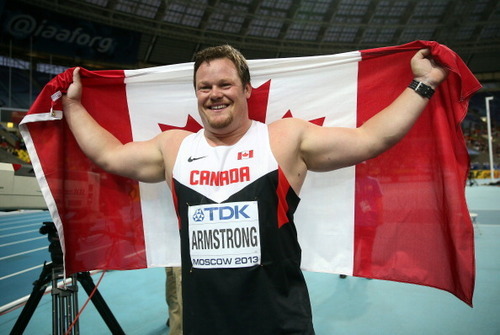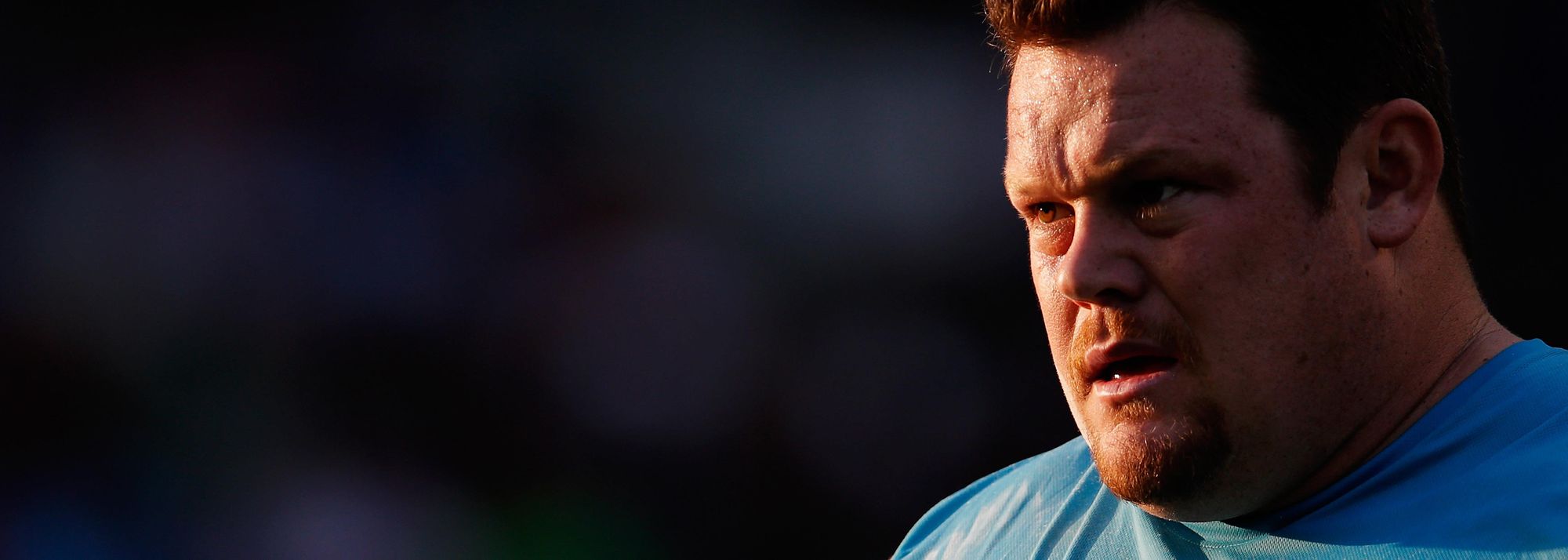Canadian shot putter Dylan Armstrong
World-class shot putter Dylan Armstrong talks exclusively to SPIKES about his rise to the top of the field and his gratitude for superstar coach, Dr Anatoliy Bondarchuk.
It is part of the challenge of being an athlete to find a great coach, and Dylan Armstrong pretty much hit the jackpot in 2004.
A hammer thrower, struggling to adapt to life as a senior athlete following a promising junior career, Armstrong’s future in the sport was at a crossroads.
That’s when Dr Anatoliy Bondarchuk – the man commonly regarded as one of the finest throws coaches of all time – suddenly appeared to apply for a low-key coaching job in Armstrong’s home city of Kamloops in British Columbia, nine years ago.
The man known as Dr B, the 1972 Olympic hammer champion who later coached world record holder Yuriy Sedykh, had relocated to a quiet corner of Canada to be closer to his daughter in Calgary.
“If it had not been for him, I would have probably have moved on with my life, and not been involved in shot put, for sure,” says Armstrong, a winner of one Olympic and two world outdoor medals. “I definitely owe him a lot. Without him it would have been impossible.”
The appropriately named Armstrong always had strength in abundance. Aged just eight he could bench press 135lb (61kg), and he was quickly directed into the sport of athletics. There he showed an aptitude for a range of events – he could high jump 1.90m as a teen – before settling on throwing.
He won a hammer silver medal at the 2000 World Junior Championships, but his career stagnated as a senior.
Fortunately, Dr B was on hand to help.
“He said to me that my body was better suited to the shot,” says Armstrong. “He has lots of experience, so I have no regrets. He made the right decision.”
Armstrong had not thrown a shot for nearly three years, and it was a slow process.
He threw respectable distances of 19m+ in his first couple of seasons, and finally cracked 20m for the first time in 2006, with a best of 20.62m.
The following year he made his first senior championship appearance, winning the Pan American title and finishing a respectable eighth at the Osaka 2007 World Championships.
At the Beijing 2008 Olympics he set a national record of 21.04m for fourth, which was later upgraded to bronze after the second positive test of Andrei Mikhnevich.
“I definitely put everything on the line [for Beijing],” he adds. “I had so much faith and trust in Dr B’s knowledge, and it worked out.
“It was just such a good accomplishment to switch events and get the bronze medal. I thought: you know what, I can beat these guys. I’m as good as anyone else.”

Strongarm: Dylan Armstrong celebrates world bronze in Moscow
More success followed. In 2010 he advanced his Canadian record to 21.58m and landed gold at the Commonwealth Games in New Delhi. After enjoying the best winter of his career – with just one week’s rest – he entered the 2011 campaign in the form of his life.
He fired the 7.26kg metal ball out to a mighty 22.21m in Calgary that summer, a PB that still ranks him 14th on the all-time lists.
Later that year he was denied a world gold medal in Daegu, after a fantastic final round throw of 21.74m by Germany’s David Storl.
“I was definitely happy to get a silver medal,” he says, “but I think if there was one championship I underperformed at it was Daegu. I was in 22m+ shape for that competition. I felt I had a big throw in me.”
His 2012 campaign was badly hampered by a nagging elbow injury, and he competed in pain to take fifth at the London Olympics.
He was all set to go in for elbow surgery after the Olympics to fix the chipped bone in his arm, only for his master coach to intervene and dissuade him from going under the knife.
“Dr B said: ‘I don’t think you should have surgery, it could finish you.’ I was 31 at the time and I pulled out of having the operation. It was the best decision. I listened to him, I worked through it.”
In February this year, he returned to full training and another successful season climaxed with bronze at the 2013 World Championships in Moscow.
“To win another medal was an unreal feeling, and it gives me so much confidence for next year.”
Armstrong turns 33 in January, and his two goals for 2014 are clear: to defend his Commonwealth title in Glasgow, and once again breach the 22m barrier.
With a 73-year-old genius named Dr B in his corner, anything is possible.
“He is a scientist. That’s his passion,” says Armstrong. “His training methods are very modern, very specific, and moulded to me as an individual.”
“We put a big emphasis on throwing and less emphasis on the gym. This type of training allows me to have a long career, and throw consistently well for a long time. When you have somebody like that putting so much time into coaching: I am going to be successful.”




